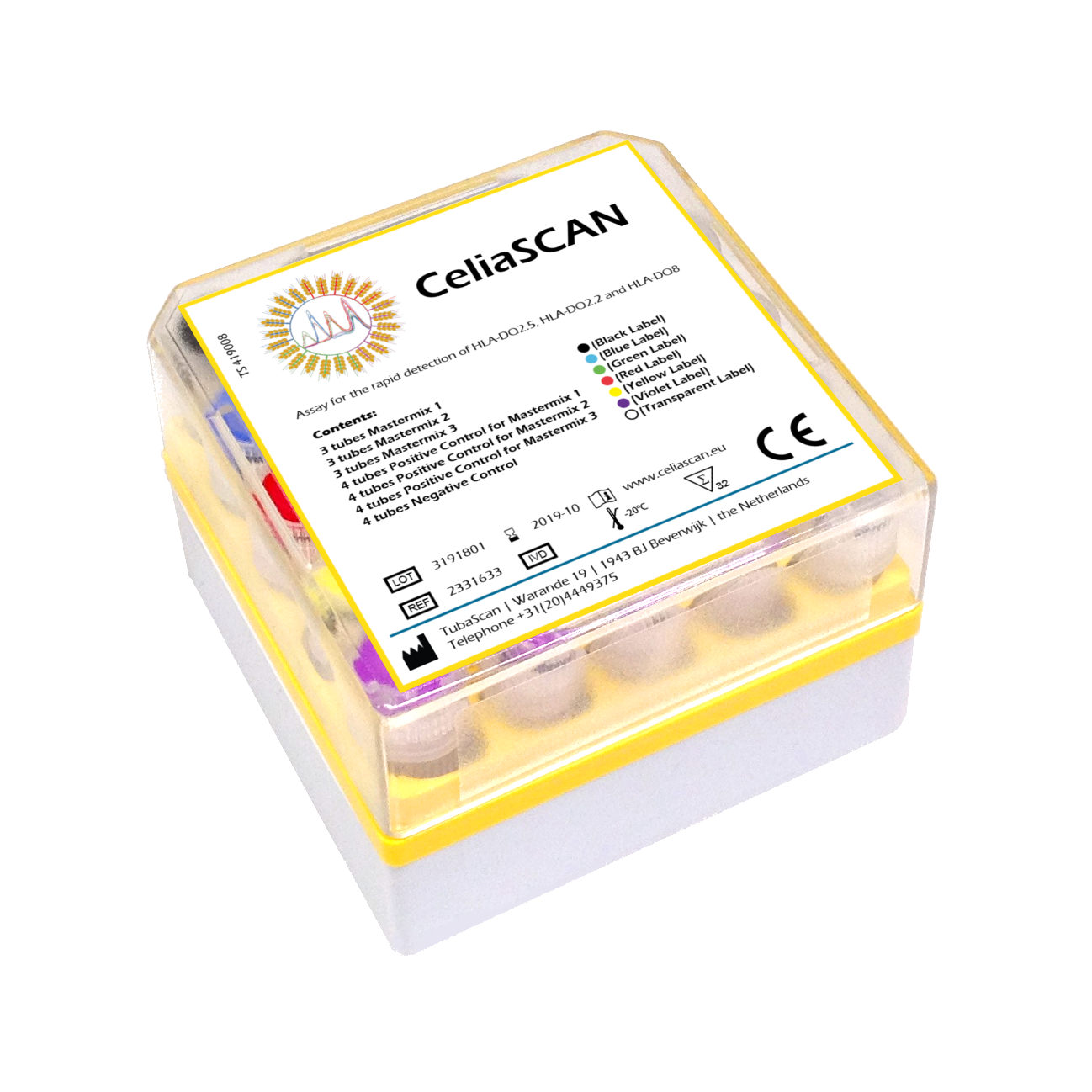Description

The detection of HLA-DQ2.5, HLA-DQ8, HLA-DQ2.2 and HLA-DQA1*05 markers by PCR is based on the amplification of allele specific parts in exon 2 of both the HLA-DQA1 and HLA-DQB1 genes.
Five primer pairs detect the DQA1*02, DQA1*03, DQA1*05, DQB1*02 and DQB1*0302 alleles needed to successfully genotype for DQ2,5, DQ2.2 and DQ8. Two more additional primer pairs detect monomorphic parts of the HLA-DRA and HLA-F genes and serve as amplification and temperature shift controls.
In the real-time PCR melting analysis method, amplification of these specifically selected sequences of DNA is detected by measurement of the SYBR® GreenER™ fluorescence signal. Because SYBR Green is incorporated into all double-stranded DNA, a melting curve must be performed to determine if the correct alleles have been amplified.
The melting curve is performed after the completion of PCR by slowly heating the reaction to 97ºC, which causes melting of the double-stranded DNA and a corresponding sharp decrease of SYBR® GreenER™ fluorescence is seen. The instrument continuously monitors this fluorescence decrease and displays it as melting peaks. Each melting peak represents the characteristic melting temperature, Tm, of a particular DNA product (where the DNA is 50% double-stranded and 50% single-stranded). The Tm is determined at the inflection point of the melting curve. Thus the presence of the desired-specific PCR product in a given sample will be indicated by its primer-specific Tm.
This innovative assay has been validated in 96-well plate format (only 3 reactions/sample) on the Roche LightCycler®480, the ABI Prism®7500 series and the BioRad CFX96 real-time PCR system.
Analysis of results:
Human interpretation of data is unnecessary since output files are automatically and instantly translated into individual and batch reports via an online software tool.
CeliaSCAN is now available as a CE-IVD certified assay.



